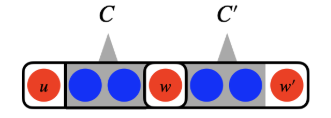2024-04-30 イリノイ大学アーバナ・シャンペーン校
<関連情報>
- https://aces.illinois.edu/news/illinois-researchers-develop-ai-model-reduce-uncertainty-evapotranspiration-prediction
- https://www.sciencedirect.com/science/article/pii/S0168169924002667?via%3Dihub
動的土地被覆蒸発散モデルアルゴリズム: DyLEMa Dynamic land cover evapotranspiration model algorithm: DyLEMa
Jeongho Han, Jorge A. Guzman, Maria L. Chu
Computers and Electronics in Agriculture Available online:27 March 2024
DOI:https://doi.org/10.1016/j.compag.2024.108875

Highlights
- Among decision tree-based MLs, RF Performance compared better than CART and XGB.
- DyLEMa can reconstruct ET based on seasonal segregated atmospheric and land data.
- DyLEMa ET PBIAS was reduced in temporal validation compared to the USGS ET data.
- DyLEMa ET estimates are robust across various cloud contamination rates.
- DyLEMa ET estimates are robust across Landsat sensor failure.
Abstract
This study presents the “Dynamic Land Cover Evapotranspiration Model Algorithm: DyLEMa” for continuous spatiotemporal evapotranspiration (ET) estimates across diverse land uses. DyLEMa employs a coupled Random Forest model with a novel dynamic recalibrating strategy to improve pre-optimized seasonal hyperparameters following satellite acquisition alongside land cover classes. An analysis of feature importance indicated the significant variability in ET processes across different land cover classes and seasons. Hence, DyLEMa was applied to 20 years of daily 30×30 m pixel resolution Landsat-derived ET data in Illinois to address spatial and temporal discontinuities due to cloud contamination and sensor failures. DyLEMa performance was evaluated on Eddy Covariance measurements to find out that DyLEMa predictions reduced the average PBIAS error from + 31 % to −7% compared to existing US Geological Survey ET products. Spatially, DyLEMa underscores the value of a land cover-aware approach in ET estimation under varied cloud cover rates and their ability to preserve landscape features. However, the performance of DyLEMa was affected by the quality of land cover classification, suggesting the need for a refined region-specific land cover classification. DyLEMa’s flexibility and performance suggest its applicability to other regions and satellite datasets, offering a promising reduction in uncertainty of ET estimates with impacts on environmental and water resources assessments on regional scales.



